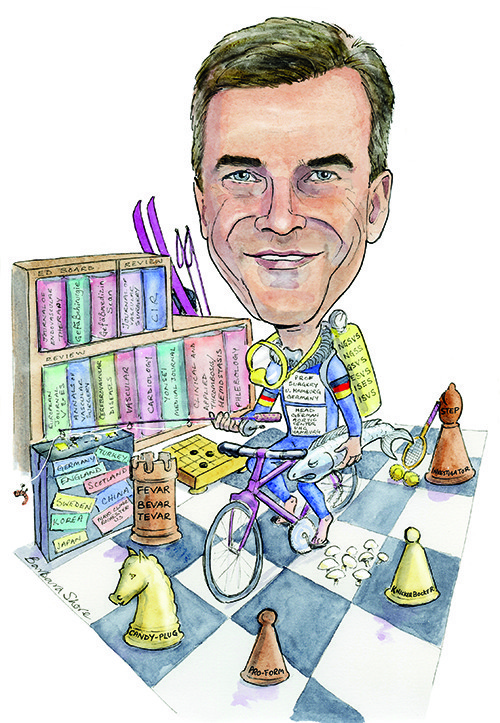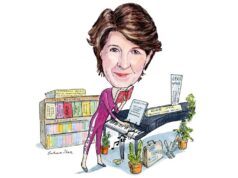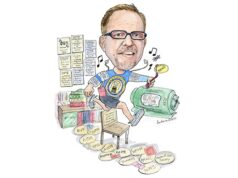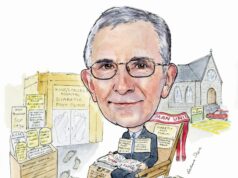 Born into a family of medical professionals, Tilo Kölbel was destined to become one himself. He tells Vascular News about his journey to becoming a vascular surgeon, the proudest moments in his career and the research that he is currently doing, as well as his interests outside of medicine.
Born into a family of medical professionals, Tilo Kölbel was destined to become one himself. He tells Vascular News about his journey to becoming a vascular surgeon, the proudest moments in his career and the research that he is currently doing, as well as his interests outside of medicine.
Why did you decide you wanted a career in medicine, and why in particular did you choose to enter the vascular field?
My medical career was guided by serendipity, mostly. I was exposed to the medical profession throughout my childhood; with my father being an orthopaedic surgeon and my mother a general practitioner. Patients, treatments, and reimbursement issues were topics of everyday dinner conversations throughout my childhood. I never thought of becoming a physician myself until friends convinced me to sign up for the medical school admission-tests at the last minute. Fortunately, with good marks, I gained the option to enter medical school directly.
All surgical fields I worked in were interesting and I would have been happy with a career in urology, orthopaedic surgery, or general surgery. But I chose vascular surgery because I noticed that the general surgeons I worked with during my training were overly cautious of vascular damage. So much so, that they sometimes limited surgery just to stay safely away from major vasculature. The limitations I witnessed helped me understand that vascular surgery experience would make me a better surgeon; and allow me to perform surgery as extensively as necessary.
Who have been your most important career mentors and what lessons did they teach you?
Many colleagues taught and influenced me throughout my career. Bengt Lindblad gave me confidence in operating and stimulated my curiosity for research. Mats Lindh taught me the principals of vascular interventions and shared his vast knowledge on interventional materials with me. Krassi Ivancev inspired and encouraged me to change what requires change, and that endurance can overcome most hurdles. Martin Malina believed in my ideas and encouraged my steps forward in device-development. Sebastian Debus gave me the opportunity to co-develop a cutting-edge aortic programme and to refine treatment principles in complex aortic therapies.
But perhaps the most vital lessons come from experience. With every case, I learn something new alongside the colleagues I have the privilege of working with.
And most importantly, my patients continue to teach me to value their health and wellbeing, and that every aortic case needs to be judged individually with respect to their needs.
How have you seen the field develop during the course of your career?
I began to follow aortic treatment techniques and principles in 2004 when I moved to the Malmö Vascular Center in Sweden. Most basic treatment principles and techniques were already established at that point—and, in all areas, refinement and technical improvements have characterised the development trend since then. Fenestrated and branched aortic endografts have been applied to all areas of the aorta since.
A major breakthrough for proximal aortic therapies, in my memory, was the use of trans-cardiac access techniques; such as the transseptal and transapical access techniques used for structural heart interventions. At the same time, open and hybrid techniques have developed around frozen elephant trunk.
What new vascular technology are you watching closely and why?

Not all patients are suitable for endovascular repair due to anatomical reasons and certain comorbidities. I follow closely developments such as the spider-graft for thoraco-abdominal repair to improve open surgical and hybrid techniques—in hopes of offering less invasive treatments for patients who are currently contraindicated for endovascular repair. But some of the techniques and implants, especially those which promise easy solutions for complex problems—like the Multilayer Flow Modulator or simple aortic arch stents for type A aortic dissection—should be watched with caution, as the described mechanism of action may be both unproven and far too optimistic to be true.
My interest in new developments for this space is motivated by the fact that I frequently have to deal with failed previous repairs.
Aneurysm sac-filling technologies are also of interest, and I am glad to see that more companies are developing polymers that may work without a bag and independently of the main graft.
Lastly, cerebral protection devices have become frequently used tools in transcatheter aortic valve implantation (TAVI). I follow this technology with great interest as we will need to focus more on safeguarding neurological outcomes in thoracic endovascular aneurysm repair (TEVAR) in the near future.
What is the most interesting paper or presentation that you have seen recently?
In the British Journal of Surgery, AH Perera et al present a study on neurological outcome after TEVAR with a surprisingly high frequency of new silent brain infarctions, over 80%, with presentation of neurocognitive decline of the same frequency. This study uses up-to-date examination to get a realistic impression of the neurologic damage during TEVAR.
What are your current research interests?
My main research interests lie in a number of different areas:
• Stroke prevention in TEVAR, the role of air embolism and techniques to prevent stroke together with Fiona Rohlffs and Vladimir Makaloski.
• Clinical outcomes of complex aortic arch intervention together with Nikos Tsilimparis.
• Development of a new hybrid-graft for thoracoabdominal aortic aneurysm (TAAA) repair: the Spider-graft together with Sebastian Debus and Sabine Wipper.
• Spinal cord ischaemia prevention techniques in porcine models together with Sabine Wipper.
• Trans-femoral access for branched EVAR in TAAA with Nikolaos Tsilimparis.
• False lumen occlusion techniques together with Fiona Rohlffs.
What were the aims and findings of the Stroke from Thoracic Endovascular Procedures (STEP) collaboration?
The STEP study aims to reduce the risk of stroke during TEVAR. Early goals of the initiative are to define best practices in TEVAR; identify stroke-prevention strategies; and define meaningful outcome measures in cooperation with vascular and cardiovascular surgeons, clinical neurologists, cardiologists, and manufacturers of endografts. The main findings are that, among a group of 18 world-experts nominated by stent graft manufacturers, a significant experience with aortic arch endografting exists. There was broad consensus in some areas like anticoagulation during treatment and the use of cardiac output reduction in proximal landing zones. No consensus exists, presently, in revascularisation strategies of the left subclavian artery, which may play a significant role in stroke. Additional first-phase results were highlighted during the STEP-presentations at the 2018 Charing Cross Symposium.
Why do you think understanding of stroke caused by endovascular procedures has been lacking?
Advancements in TAVI, TEVAR, or carotid artery stenting (CAS) treatments are usually focused on overcoming the problems and issues of older techniques, like open surgery, and on the potential advantages of new minimally invasive approaches. This is totally justified and required in order to improve patient outcomes. At the same time, physicians and industry—both enthusiastic for these new treatments—may be biased when it comes to recognition of negative outcomes related to these new treatments. As endovascular aortic treatments are now widely established, we really need to focus on the potential down-sides of innovations introduced, to further improve outcomes for our patients—who otherwise significantly benefit from new minimally invasive treatment options.
What is the most memorable case you have had?
I will never forget the case of a patient, who I treated for an asymptomatic penetrating atherosclerotic ulcer (PAU) in the aortic arch with a branched arch graft, who suffered a stroke during the operation. It is memorable because I could see air bubbles being released in the aortic arch on digital subtraction angiography (DSA). And I remember watching the bubbles travel up the innominate artery. I did not know how to react at that time. I may have been able to avoid the stroke by closing the vessel loop at the carotid artery, but I was not prepared for that situation and the patient suffered a life-changing stroke.
What are some of the proudest moments in your career?
The proudest moment in my career was the first in-situ bending case we performed in 2007 in Malmö. A 66-year-old woman required a TEVAR with an unfavourable steep arch, so that a bird-beaking of the stent graft was likely to occur. We used a newly developed technique of modifying a standard graft so that the inner-curvature could be shortened using a sliding knot, a Bowden-cable mechanism, and a release mechanism. For the first time, we were able to remotely change the stent graft position in the aortic arch through femoral access! For me, it was the most fascinating experience to see a new idea and theory, that worked on the bench, be transferred into practice by simple side-table modification. Since this case, all introductions of new techniques at our centre have been proud moments. A few that come to mind are: the first transapical TEVAR, the first trans-septal through-wire case, the first Candy-plug, the first Knickerbocker, and the first trans-femoral branched endovascular aneurysm repair (BEVAR) case.
Other moments that I cherish are to see colleagues develop and grow to become leaders in their specialty. Recently my colleague, Nikolaos Tsilimparis, was offered a professorship at the Ludwig Maximilian University (LMU) of Munich. This may be a big loss for our team and I will miss Dr Tsilimparis, but the move also serves to distinguish our German Aortic Center in Hamburg, Germany.
What advice do you hope your mentees/students will always follow?
Do not believe your teachers too much and question dogmas in your textbooks. Do not be afraid of trying something different if you are convinced of it and do it with respect for your patients’ wellbeing.
What are some of your hobbies and interests outside of medicine?
My main interests outside medicine are to spend time with my wife and my children. I enjoy travelling and I like all kinds of fishing and outdoor activities. In the autumn, I enjoy mushroom picking—especially when in Sweden. I like swimming, skiing, tennis, and any kind of board-game like chess or go.
Fact file
Current appointment
Head of the German Aortic Center, University Heart Center Hamburg, Germany
Professional career
2009–2014 Senior consultant for Vascular Surgery and Head of Endovascular Therapy, University Heart Center Hamburg, University Hospital Eppendorf, Germany
2008–2009 Consultant for vascular surgery and interventional radiology at the Vascular Center Malmö-Lund, Malmö University Hospital, Sweden
2007 Board certified specialist in vascular surgery, Sweden
2006 Full-time occupation at the endovascular section of the Vascular Center
2005–2007 Staff-member at the Vascular Center Malmö-Lund
2004 Fellowship: Vascular Center Malmö-Lund, Malmö University Hospital, Sweden
2003 Board certified specialist in general surgery
1996–2003 Residency and fellowship in surgery (general and trauma surgery) Sankt Gertraudenkrankenhaus, Humboldt University, Berlin, Germany
Education
2015 Professor of Surgery at University of Hamburg, Germany
2012 Guest Professor at Huazhong University of Science and Technology, China
2011 Associate Professor for Vascular Surgery at the University of Hamburg, Germany
2009 Associate Professor for Vascular Surgery at the University of Lund, Sweden
Editorial Board appointments
Journal of Endovascular Therapy (since 2012)
Gefäßchirurgie (since 2014)
Gefäßmedizin Scan (since 2014)













